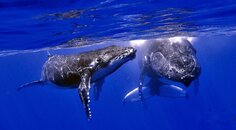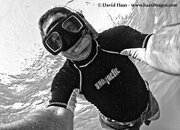This is one the funniest entertaining threads in awhile so I may as well chime in too!
As a long ago scuba instructor (1978-1990) yes, agencies required snorkels on student's masks at least for training dives.
Back then it was required to introduce snorkeling including proper free dives, clearing your snorkel with "blast" and "displacement" methods, etc. It was a good "watermanship skill" that added to people's comfort learning to scuba dive.
Then came what I call the most ridiculous, drag heavy, over engineered pieces of junk ever.....FLEX mouthpiece snorkels and HUGE "nuclear ccoling tower" GIANT gizmo top purge valves

They flop around, collapse if swimming in currents or fast. The corrugated mouthpiece would confuse students who thought they had their snorkel in their mouth accidentally grabbing their BCD hose. Just awful........Also new "clip" type attachments which added to the "floppiness" didn't help.
Like a plain snorkel keeper was real hard to attach (sheesh....)
If you stuck to a plain Jane "j" style snorkel with or without a simple mouthpiece purge you at least knew the difference between it and your BCD corrugated hose......We'd tuck the mouthpiece under our chin out of the way and yet still be accessible.
Fast forward from 1990.....Today, no, I don't wear it except snorkeling like with sea lions, dolphins or humpback whales in Moorea', French Polynesia. But it's always in my bag ready to shove under the strap when the Captain yells for dolphins or whatever sighted and you have maybe 20-30 seconds to get in the water

Both the wife and I have such a simple snorkel captured upside down behind our BCD. Never in the way or on our masks unless we need them.
Those simple snorkels are now in the realm of free divers, spear fishermen or just those who like diving without tanks.
I've posted how I believe we've made diving WAAAAAYYYYYYY too complicated these days but that's a discussion for another time .
So wear one or not, whatever!
Just go diving more and sharpen your skills to be more comfortable underwater

David Haas







 If in a calm lake with no swells or waves that would work fine. In the ocean, 7 miles offshore it is rare to have that luxury and waves would continually roll over your face.
If in a calm lake with no swells or waves that would work fine. In the ocean, 7 miles offshore it is rare to have that luxury and waves would continually roll over your face.


